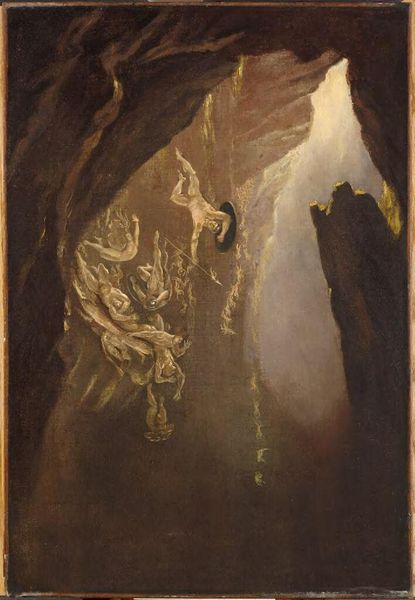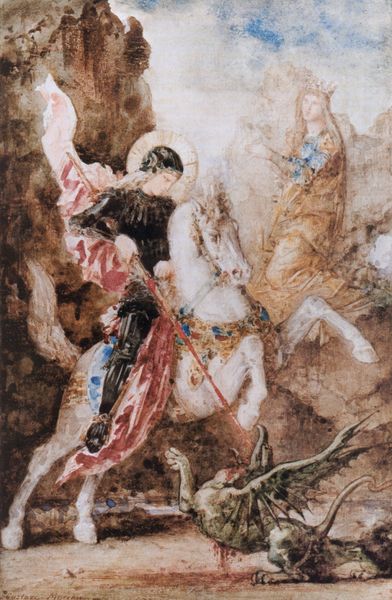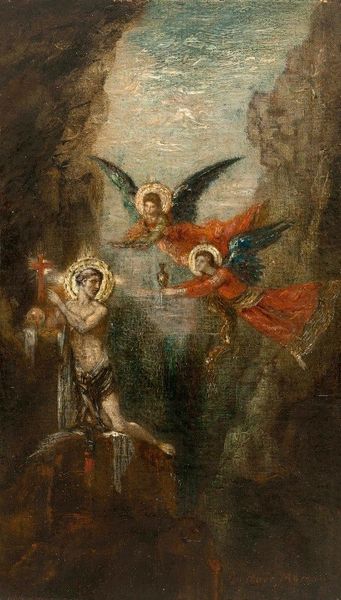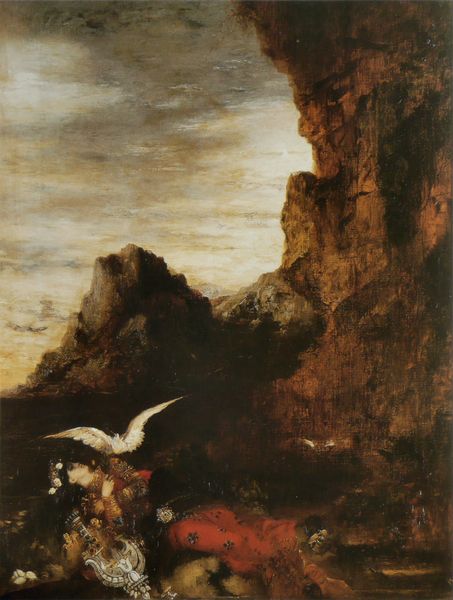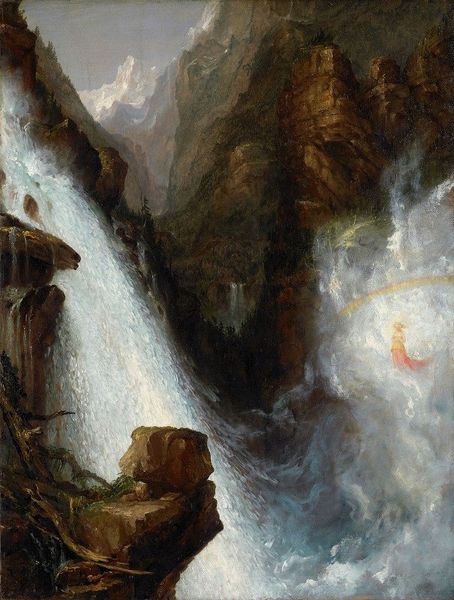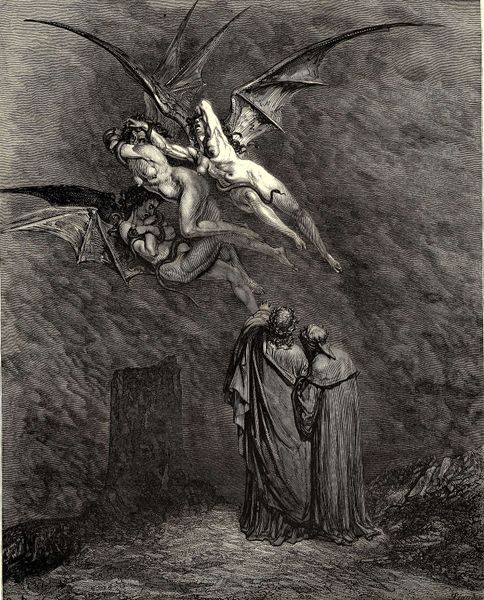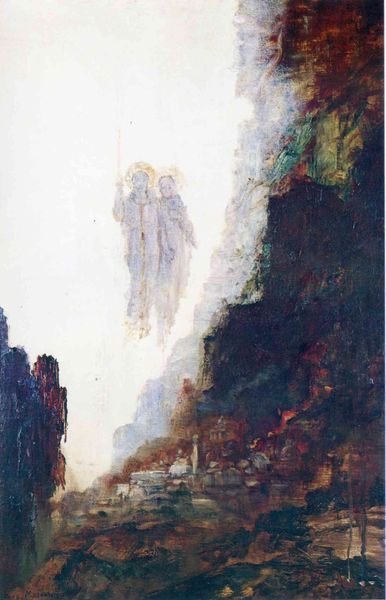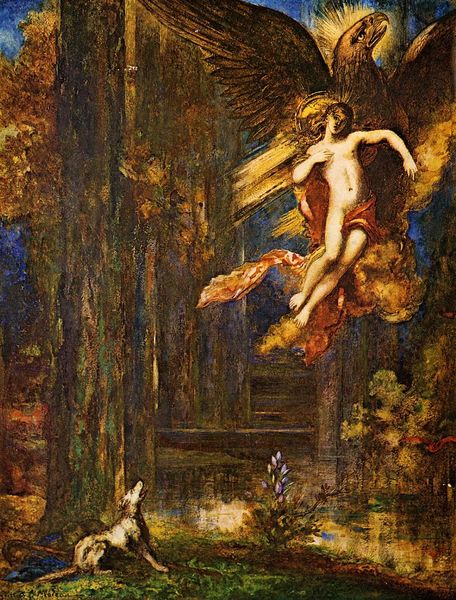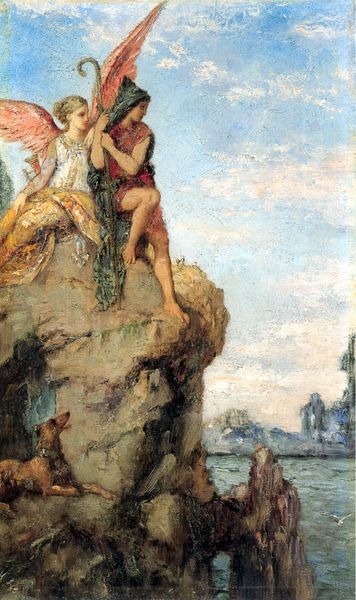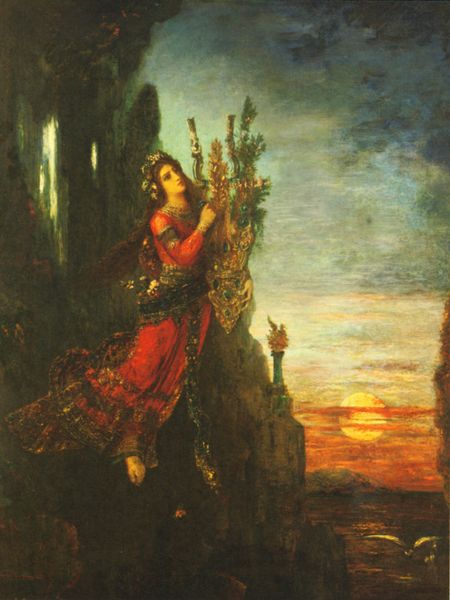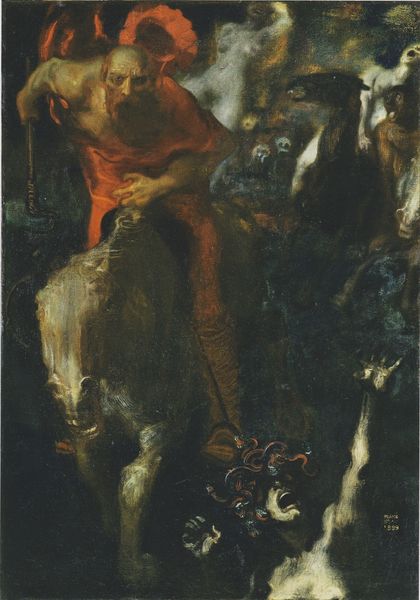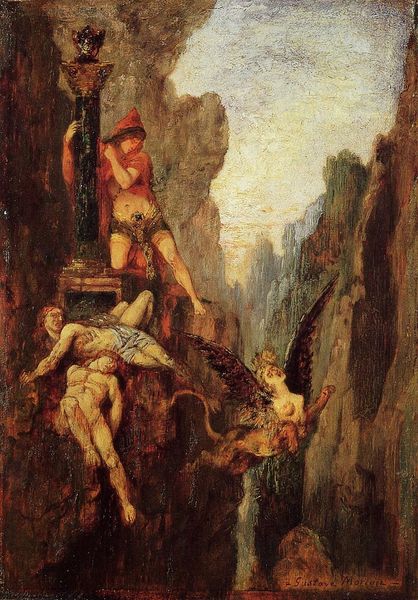
Dimensions: 33 x 20 cm
Copyright: Public domain
Curator: Welcome. Before us is Gustave Moreau's watercolor, "Sappho in Leucadia," created in 1880. It depicts the legendary poetess on the verge of her infamous leap. Editor: My immediate impression is one of tragic grandeur. The stark, almost desolate landscape contrasted with Sappho’s opulent garb creates an intense visual paradox. Curator: Precisely. Moreau masterfully employs symbolic language here. The crumbling architecture behind Sappho, for instance, isn't mere backdrop; it functions as an index of her declining world, a world where female intellect and same-sex desire are ostracized. Note the almost perverse juxtaposition of the cold, indifferent cliffside against the lavish ornamentation adorning Sappho herself. Editor: I find the choice to render Sappho’s attire in such vibrant detail quite telling, as well. Red, after all, has so many charged associations: passion, danger, even martyrdom. Moreau seems to be actively mythologizing Sappho not just as a suicidal figure but as a powerful woman driven to extremes by societal constraints. The watercolor medium, with its fluid washes, adds to the ephemeral quality of the scene. She’s caught in this in-between moment. Curator: Yes, the ethereal treatment heightens the overall drama. But, looking purely at compositional elements, one must consider the placement of Sappho relative to the cliff's edge. Moreau creates a precarious equilibrium, both literally and figuratively mirroring her psychological state. This use of implied lines—leading the eye downward towards the abyss—is absolutely critical to the narrative structure of the painting. The very concept of implied lines lends an abstract feeling that allows us to experience her turmoil. Editor: Right, the spatial dynamic here screams of impending fall. This echoes throughout so many women artists who expressed that same torment with similar precarious positionings. More broadly, one must ask how Moreau is using Sappho to reflect on gendered and sexual oppression? He might even be suggesting it is better to throw yourself away than comply to repressive societal restraints. Curator: That's an interpretation grounded in theory that brings the piece alive in a fresh way! Even when looking strictly at the form, at its design, there is a reason why viewers are often pulled to the figure. Editor: This dive has led me to rethink the tragic elements surrounding it, so I think you’re spot-on with his overall form decisions as well!
Comments
No comments
Be the first to comment and join the conversation on the ultimate creative platform.
